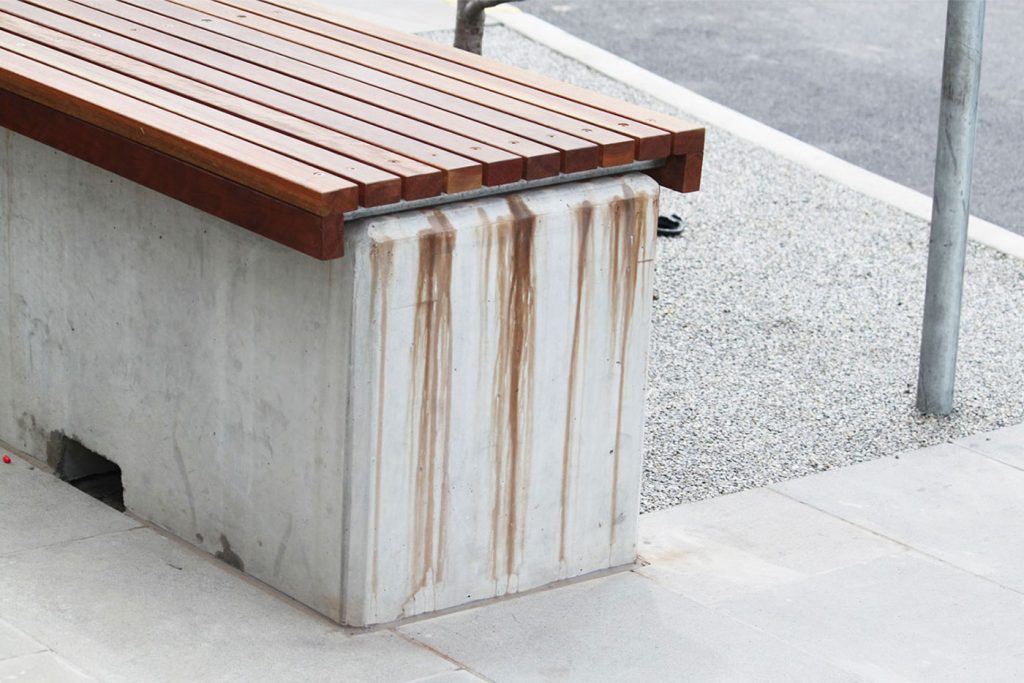You’ve designed some beautiful new furniture for your landscape project, which utilises timber and concrete elements in a stunning material combination. The furniture is delivered to site and assembled, ready to be installed.
Alas! After a few days of rain, you’re shocked to find that tannins from the timber have leaked all over the clean concrete surface, leaving ugly brown stains that mar its appearance. What now?
Cleaning
As concrete is a porous material, tannin stains are likely to have permeated beneath the surface. Cleaning with soap and water will often prove ineffective. For a deeper clean, we recommend using a chlorine solution, performed by a professional cleaning contractor. Utilising the services of an expert is always the recommended solution, in order to prevent irreparable damage that could occur from improper use of incorrect cleaning agents.
Pre-Treatment
To avoid tannin stains, each material component should be properly treated beforehand. Timber must be weathered for a period of time prior to coating, to allow tannins and natural oils to leave the surface. Timber coating should also be re-applied every 12 months. Any concrete to be paired with timber must be properly sealed with the appropriate sealer. Sealing is a service that SVC offers on all furniture products and it is completed in controlled factory conditions prior to product delivery.
Alternative Materials
The most foolproof way to prevent tannin stains is to use a timber composite, which uses recycled timbers and plastic to create a material that looks and feels like natural timber, but does not require the same level of maintenance. These timber composites will never leak any tannins or oils.
Prevention is always better than cure, and by following the steps above, you can bid goodbye to those unsightly timber stains!



